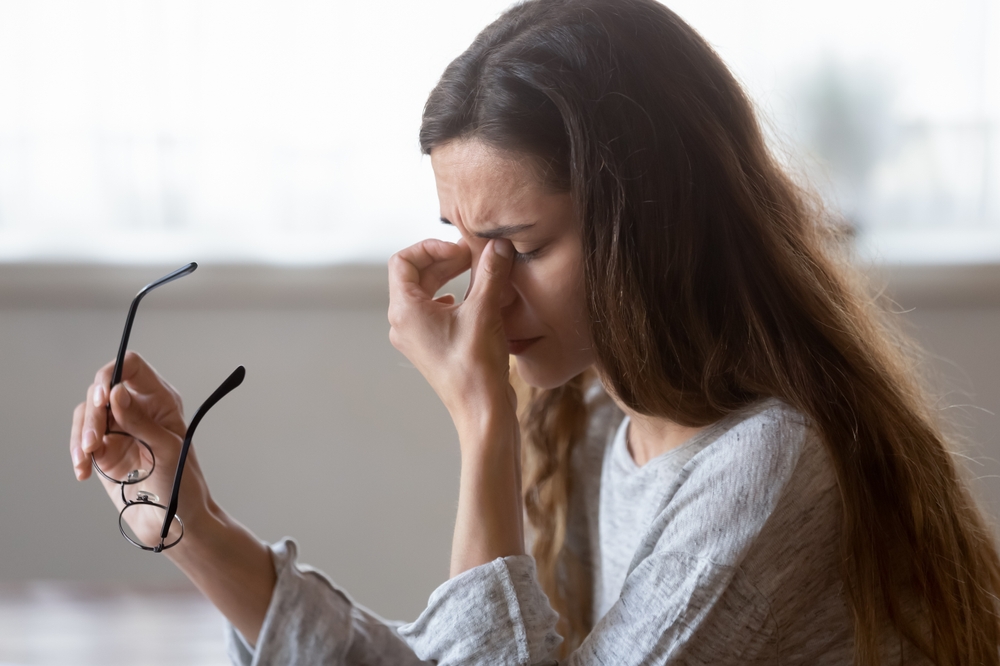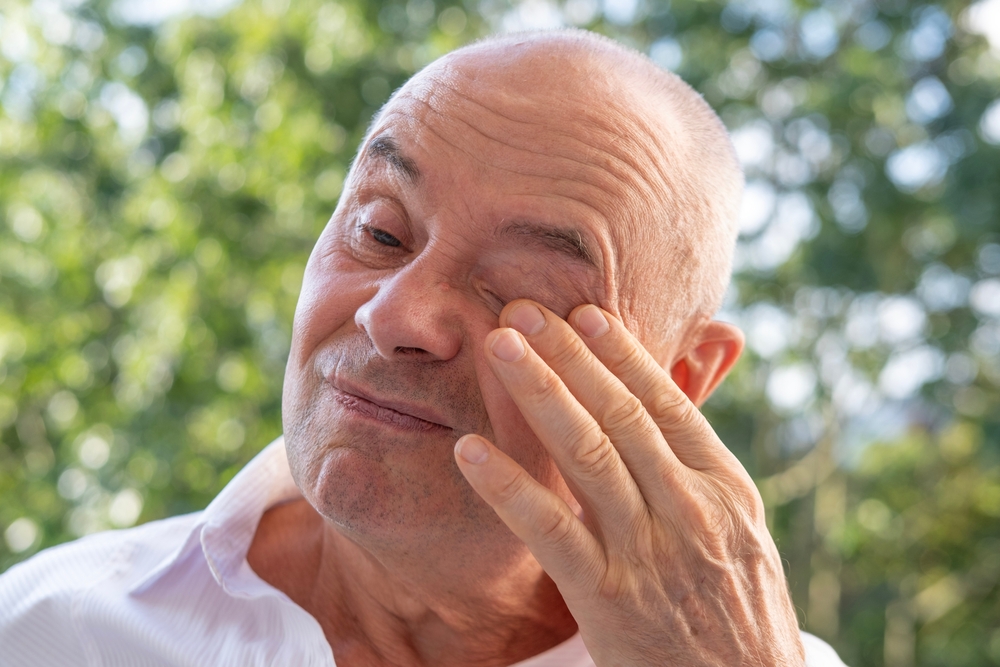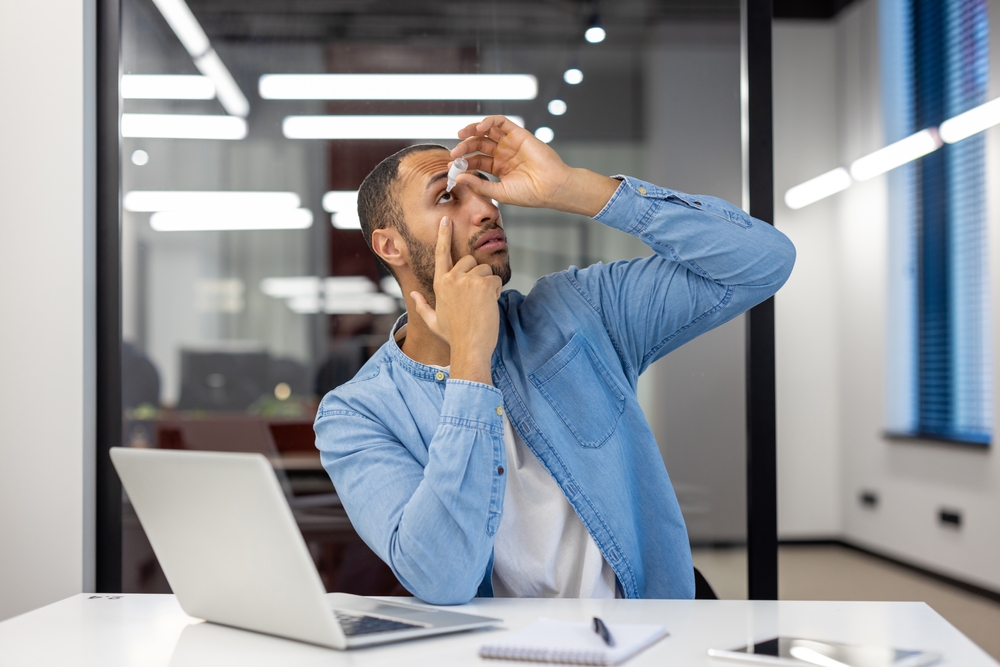Do you have dry, irritated eyes that won’t go away? You may benefit from comprehensive dry eye treatment from an eye doctor.
Our ophthalmologists and optometrists offer effective solutions for multiple types of dry eye and can provide a thorough diagnosis that narrows down the root cause of your discomfort. Keep reading to learn more about how eye doctors treat dry eye and what treatments could be right for you.
What is Dry Eye?

Dry eye is a common condition that occurs when your eyes make low-quality tears or don’t make enough tears, preventing them from staying moist and comfortable. The condition can become progressively worse and cause bothersome symptoms that impact daily activities, including reading, watching TV, working on your computer, and driving.
Common symptoms of dry eye include:
- Eye redness
- Light sensitivity
- Eye fatigue
- Blurred or double vision
- Stringy mucus in the eyes
- Stinging or burning sensation
- Difficulty wearing contact lenses
- A gritty or scratchy feeling like something is in the eyes
- Excessive tearing
The condition typically results from an imbalance in one of the components of the tear film that protects and lubricates your eyes. Your tear film consists of three layers:
- The mucus layer, which is the innermost layer that helps tears stick to the surface of your eyes
- The watery layer, which is the middle layer that keeps your eyes moist
- The oily layer, which is the outer layer that prevents tears from evaporating too quickly
A deficiency in one or more of these components can lead to dry eye.
What are the Different Types of Dry Eye?
The two most common types of dry eye include:
Evaporative Dry Eye

When there isn’t enough oil to support a healthy tear film, it’s called evaporative dry eye. This is the most common type of dry eye, occurring when your tears evaporate rapidly.
The most common cause of evaporative dry eye is Meibomian gland dysfunction or MGD when the Meibomian glands become clogged or inflamed and don’t secrete the oil needed to keep your tears from evaporating too quickly.
Aqueous-Deficient Dry Eye
In aqueous-deficient dry eye, the lacrimal glands don’t produce enough of the watery or aqueous layer. Certain autoimmune disorders can cause inflammation in the lacrimal glands, preventing them from making adequate aqueous tears.
How is Dry Eye Diagnosed?
To diagnose dry eye, your eye doctor will first ask about your eye health history and current symptoms. Next, you’ll undergo various tests, such as:
Keratography
Your eye doctor may use a keratograph device to closely examine your cornea, eyelids, meibomian glands, and the surface of your eye for signs of dry eye.
TearLab
TearLab testing is an advanced technology that measures the quality and quantity of your tear film, personalizing your dry eye diagnosis.
Inflammadry
Inflammadry is a rapid test that can measure levels of MMP-9, an inflammatory marker often found in the tears of patients with dry eye.
Once the root cause of your dry eye symptoms has been identified, your eye doctor will create a personalized treatment plan to help you find relief.
How Do Eye Doctors Treat Dry Eye?
There are various treatments for dry eye, including:
Lifestyle Changes

Before trying other treatments, your eye doctor will likely recommend lifestyle changes to help reduce symptoms and triggers of dry eye. These may include:
- Avoiding smoky, windy, or dusty environments
- Using a humidifier in your home or office
- Drinking more water
- Applying artificial tears
- Limiting screen time
- Incorporating more omega-3 fatty acids into your diet
- Applying a specific warm compress like a Bruder Mask or Eyedration Mask
- Improving your sleep through specialty products like Dry Eye Drink PM
Eye Drops
Prescription eye drops can help treat dry eye by reducing inflammation in the meibomian glands, allowing them to secrete the oils needed for a healthy tear film. While eye drops offer some dry eye patients relief, they may not address the underlying cause of the condition, and their effects are often short-lived.
They also require repeated application and may not work for patients with more severe cases of dry eye.
IPL
IPL (intense pulsed light) is another treatment option for dry eye. This light-based therapy addresses the underlying cause of evaporative dry eye, offering long-lasting relief.
It works by applying targeted heat and light to the meibomian glands, clearing blockages and allowing them to produce the oils needed to keep your eyes lubricated. It takes 10 to 15 minutes to complete the treatment, and you can resume regular activities immediately afterward.
Patients often notice an improvement in dry eye symptoms after their second or third session, but four treatments spaced about two to four weeks apart are recommended for optimal results. IPL can be an excellent treatment for moderate to severe dry eye symptoms caused by meibomian gland dysfunction.
Highly Effective Dry Eye Treatment at Williamson
Williamson Eye Center has the largest comprehensive dry eye center in the state of Louisiana and one of the largest in the country. Our specialists travel the country teaching other doctors how to treat dry eyes.
Come be treated by the experts who train other doctors! If you have dry eye, advanced solutions like IPL at Williamson Eye Center can help you experience long-term relief.
Our dry eye specialists can determine the dry eye treatment that is best for you and develop a personalized plan to ensure your vision is clear and your eyes are comfortable and healthy.
Are you struggling with dry, irritated eyes? Schedule your appointment at Williamson Eye Center in Baton Rouge, LA, today!



